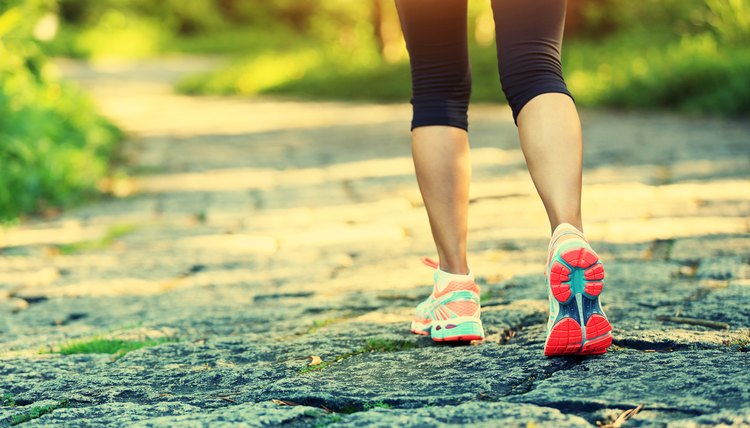Do Calf Raises Make My Calves Bigger?

Big calves may create proportion in your legs if you're strutting on a bodybuilding stage with equally large thighs. However, big calves don't offer a lot of benefit when it comes to athletic ability. You use your hamstrings, quads and glutes to provide the major power in running and jumping. Too big of calves can actually slow you down by adding too much bulk and hindering ankle stability and lower leg flexibility.
So, if you crave proportion and big legs — do lots of calf raises with good form and notable weight. If not, you might skip this isolation move and focus more on compound exercises that work the whole of the lower body, including squats and deadlifts.
Read More: Exercises for Increasing Calf Size
Anatomy of the Calf Muscle
The calf muscle, or gastrocnemius, is located on the back of your lower leg. It runs across both your knee and ankle joint and has two heads. The medial head originates on the medial, or inner, condyle of your femur. The lateral head originates on the lateral condyle of the femur. The two heads come together into the Achilles tendon and insert onto the heel of your foot.
Calf Raise Description
Perform a calf raise from a standing position on the floor, a step or a weighted machine. Stand with your feet about hip-width apart and toes pointed straight ahead. You can hold a barbell across your shoulders or dumbbells in your hands if you're using free-weights, or you can use a calf raise machine. Keeping your knees straight, rise up on your toes as high as you can. You will feel the tightness in the back of your lower leg. Slowly lower yourself down to the start position to complete one repetition.
Muscular Hypertrophy
Hypertrophy is the muscular enlargement that is a result of training. To get bigger calves, you need to increase the size of the muscle fibers in your calves or the number of fibers. Perform the correct amount of sets and repetitions with a heavy load to stimulate these changes and achieve muscle growth. The National Sports and Conditioning Association recommends three to six sets consisting of six to 12 repetitions. The weight needs to be heavy enough to perform within the recommended repetitions with proper form, but challenging enough to cause you to feel fatigue. Rest about 30 to 90 seconds between each set.
Training Tips
Your calves can be difficult to train. Add in other exercises besides standing calf raises to continually challenge the muscles. For example, do sets of calf raises with just one leg at a time or include the seated calf raise. You can also change the way the calf raise targets your calves by altering the angle — point your toes toward each other or slightly out during the exercise.
To keep the calf muscles challenged, vary the sets and reps that you perform as well as the weight you lift. For example, do not always do six sets of 12 with 100 pounds. Your body will get used to the same workout very quickly.
Read More: The Best Calf Toning Exercises
Hypertrophy Limitations
Genetics and age can play a role in whether you get big calves from calf raises. If you have a small build and have trouble putting on muscle, your calves will be as stubborn in gaining muscle size as is the rest of your body. You'll need to train consistently and eat a diet that is conducive to muscle growth to add lean muscle to your calves. Also, as you age you naturally lose muscle tissue. As you get older, muscular adaptation takes longer.
References
Writer Bio
Bethany Kochan began writing professionally in 2010. She has worked in fitness as a group instructor, personal trainer and fitness specialist since 1998. Kochan graduated in 2000 from Southern Illinois University with a Bachelor of Science in exercise science. She is a Certified Strength and Conditioning Specialist, Certified Personal Trainer, Medical Exercise Specialist and certified YogaFit instructor.
